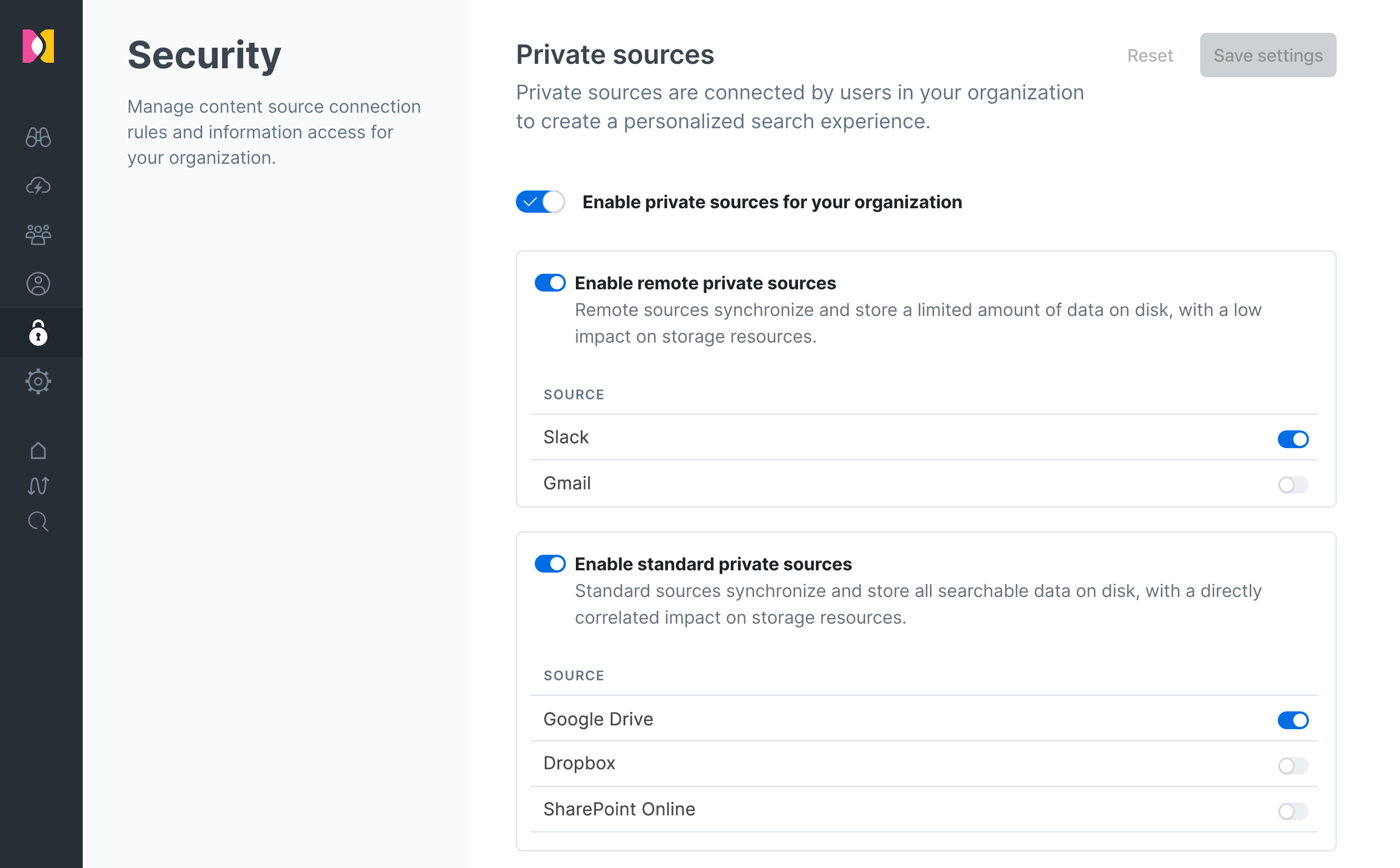Enabling private content sources
editEnabling private content sources
editEnabling private sources
editPrivates sources are easily enabled from the Security area in the Workplace Search administrative dashboard. Once enabled, users of the platform will be allowed to connect any configured source with their own credentials.
Learn more about Configuring First-Party Content Sources.
You may enable Remote and Standard sources as top-level groupings, or individually at the service type level (e.g. Google Drive, Dropbox, etc):

Enabling private sources for remote content sources
editRemote Sources rely on the data source’s search endpoint to retrieve information, and limited information is stored on disk. In other words, Remote Sources have a limited impact on deployment size compared to traditional Standard sources. For example, when connecting Slack as a Private Source, messages and files are not synchronized and directly stored (all the while searchable), but small amounts of metadata such as channel names are retrieved and kept on disk. This allows you to enable personalized search at scale all the while keeping the size of your deployment in check.
Once enabled, users may navigate to their Personal Administrative Dashboard and connect available Private Sources with their personal credentials, gaining immediate access to the content available to them on the third-party platform, in real time. Private Sources are managed on a per-user basis and searchable data is only available to the connecting user.
Enabling private sources for standard content sources
editStandard Sources store all documents visible to a user on disk for every new individual connection. For example, if three users elect to connect Google Drive as a Private Source, every synchronization process will create a separate repository (index), and documents with shared access will be duplicated.
Once enabled, users may navigate to their Personal Administrative Dashboard and connect available Private Sources with their personal credentials. Private Sources are managed on a per-user basis and searchable data is only available to the connecting user.